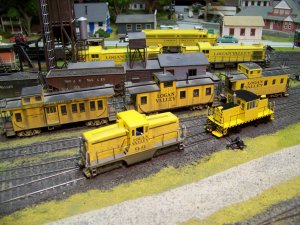Had read back awhile, about use of 2" thickness ISO FOAM industrial ceiling insulation, for layout sub-roadbed material. It IS: stronger, more rigid, lightweight, cost about same per 4 x 8 sheet as regular pink/blue extruded foam. Immediately obtained sheet, to try on new HO module. I then discovered the possible HEALTH HAZARDS associated with it's use, for SOME of you modelers out there!
It has fiberglass strands running through it. When I cut 4 x 8 sheet in half, for 24" shelf modules, violent itching started, as it is very irritating to human skin! I then developed cough, with severe respiratory irritation [asthmatic since childhood]. This meant NO further contact with the product, for me. Panels should have hazard warning labels on possible Health Risks! Panels went to town dump ASAP! IF I'd known ahead of time, maybe long-sleeved shirt, gloves, dust mask as PPE [Personal Protective Equipment] would have worked fine! I would have also SEALED ALL PANEL EDGES with thick layer of paint or two. Like the Old Saying goes: You [should] LEARN from your Mistakes! AND, making holes in panels for electrical wiring, may have also been a source of trouble. Hope this Tip is of use to some folks out there. TTFN.
.....Old Tom aka papasmurf in New Hampshire
 wasn't too thrilled after spending 10 minutes fighting it before hand just to figure that one out...
wasn't too thrilled after spending 10 minutes fighting it before hand just to figure that one out...

